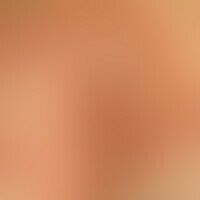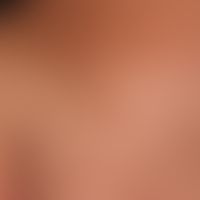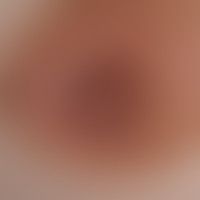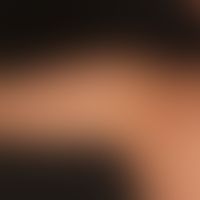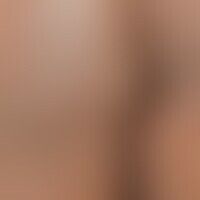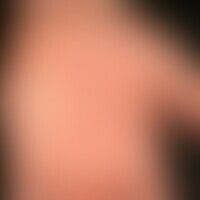Image diagnoses for "Nodules (<1cm)", "brown"
104 results with 285 images
Results forNodules (<1cm)brown
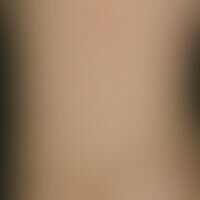
Blaschko lines
Blaschko-lines: along the Blaschko-lines on the back of a 9-month-old boy a large-area, (discrete) epidermal nevus is visible for the first time in the 3rd month of life.

Acuminate condyloma A63.0
Condylomata acuminata, finding in an infant with multiple small papules with few symptoms.
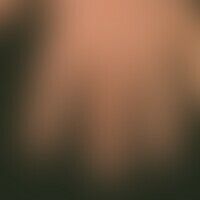
Granuloma anulare classic type L92.0
Granuloma anulare, subcutaneous type. 8-9 years old, developed on the stretching side, deeply situated, coarse, flat, confluent papules with indicated anular arrangement in a 38-year-old patient. Small nodules on the sides of the fingers and on the back of the hand, particularly pronounced on digitus III. Painfulness on touch or pressure as well as restriction of movement on digitus I.
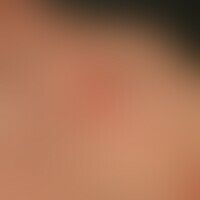
Dyskeratosis follicularis Q82.8
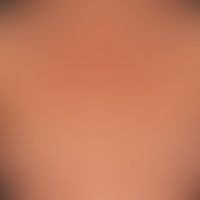
Early syphilis A51.-
Syphilis early syphilis: maculo-papular syphilide, in places aligned with the tension lines of the skin (some tension lines of the skin)
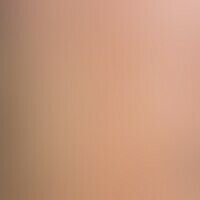
Lichen myxoedematosus discrete type L98.5
Lichen myxoedematosus. densely standing, skin-colored, clearly increased in consistency, only slightly itchy, shiny, 0.1-0.2 cm large, mostly polygonal papules (forearm).
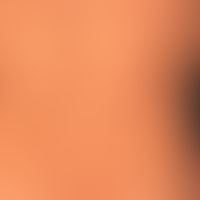
Neurofibromatosis (overview) Q85.0
type I neurofibromatosis, peripheral type or classic cutaneous form. numerous smaller and larger soft papules and nodules. several so-called café-au-lait spots.
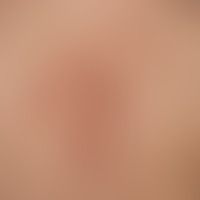
Neurofibromatosis (overview) Q85.0
type i neurofibromatosis, peripheral type or classic cutaneous form. numerous smaller and larger soft, predominantly pigmented, practical nodules and nodules. in the larger nodules the so-called "bell-button phenomenon" can be detected. the palpating finger penetrates the deep dermis as if through a fascial gap. few café-au-lait spots. papules and nodules. only isolated rather discreet café-au-lait spots.
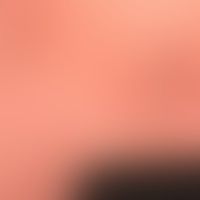
Xanthome eruptive E78.2
Xanthomas, eruptive: Chronically stationary or chronically active clinical picture with multiple, on trunk and extremities localized, disseminated, 0.1-0.3 cm large, flat raised, on the surface somewhat fielded, symptomless, sharply defined, firm, smooth, yellow-red-brown papules.

Leiomyoma (overview) D21.M4
Leiomyoma (marginal area): Missing follicular structure in lesional skin (right marked side); left normal skin with encircled follicles.
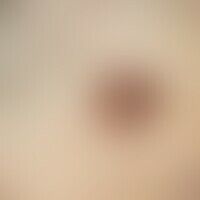
Basal cell carcinoma pigmented C44.L
Basal cell carcinoma pigmented: A slow-growing, sharply defined, surface-smooth, sometimes shiny, brown lump with smaller crusts and scaly deposits that has existed for years.
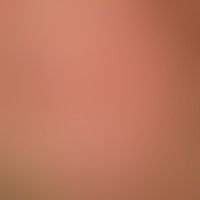
Demodex folliculitis B88.0
Demodex folliculitis 20-year-old female patient without previous acne vulgaris, slight tendency to rosacea erythematosa. histological: massive infestation of the follicles with Demodex folliculorum.

Leprosy (overview) A30.9
Leprosy lepromatosa: advanced findings with numerous, almost symmetrically distributed, asymptomatic papules and nodules, no concomitant inflammatory reaction.
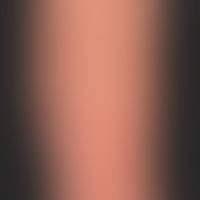
Extrinsic skin aging L98.8
Chronic sun damage of the skin: Dry, coarse-fielded, atrophic skin with solar lentigines and non-pigmented precancerous lesions of the actinic keratosis type.
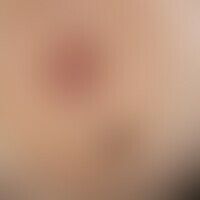
Nevus melanocytic (overview) D22.-
Usual melanocytic nevus. Brownish, roundish, 0.3 cm in diameter, sharply defined, soft, asymptomatic, smooth papule in the region of the right areola of a 26-year-old woman. No size growth in recent years.

Candida granuloma B37.2
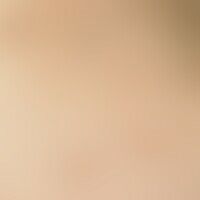
Fibroma molle (skin tags) D23.-
Soft fibromas: Numerous, stalked, penduptive, soft, skin-coloured or slightly brownish, symptomless outgrowths in the axilla region.
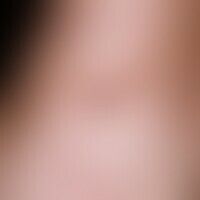
Porokeratosis mibelli Q82.8
Porokeratosis Mibelli. gradually progressive finding with solitary, 0.1-0.2 cm large, symptom-free, yellow-brown horny papules (primary lesion), which have been present for years. As shown here, they show surface and thickness growth. On the back of the foot the papules have (coincidentally) merged into a coarse plaque with a spiny surface.
